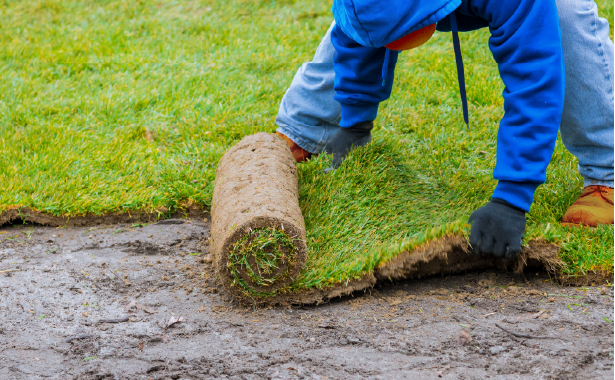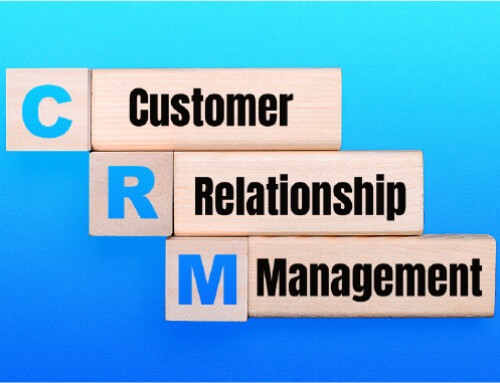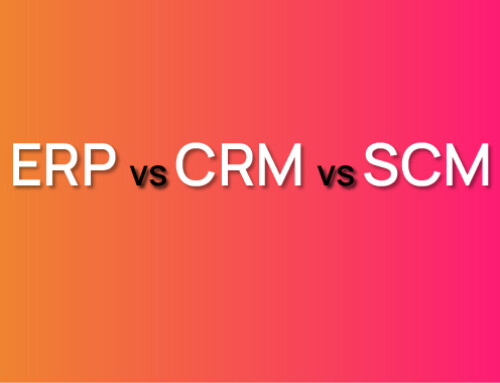Contents
It’s no secret that the landscaping business is booming. As more people move to urban areas and home ownership becomes more accessible, the demand for residential landscaping has increased dramatically in recent years. It seems that between the more than 20 types of contractor jobs, landscaping is the hottest in 2022. That’s why this guide on how to start a landscaping business will definitely come in handy for any entrepreneur looking to start a contractor business.
If you’re looking to break into this hot industry, there’s a lot you need to know about starting a landscaping business. Are you ready to strike out on your own? Do you love the outdoors and want to work outside all day? Do you have a green thumb and are good at organizing people? If so, there’s a lot of opportunity in landscape maintenance. But before you can start cutting grass or planting flowers, there are essential steps to take. Landscaping is a booming industry that can provide new business owners with plenty of growth opportunities. However, starting your own business does require careful planning and learning about the industry before jumping in headfirst.
Before Starting A Landscaping Business, There’s A Lot To Consider.
Before you start a landscaping business, it’s important to consider what kind of business you want to run. There are many options:
- A one-man operation with no employees
- A company with a few employees who work for you and specialize in different areas (i.e., sales, customer service, etc.)
- A large corporation with multiple locations across the country or world
Once you’ve decided on the type of business and location(s), it’s time to figure out what kind of services and products will be offered at each location.
If You’re Good At Organizing And Motivating People, You Might Be Ready To Be A Business Owner.
If you’re good at organizing and motivating people, you might be ready to be a business owner.
As a small business owner, you’ll be in charge of everything from hiring employees and managing their paychecks to making sales calls and staying on budget. It’s up to you to make sure everyone on your team is working together toward the same goals. For example, if your company needs a new website design but lacks funds for it right now, then as the manager of this project—and therefore ultimately responsible for its success or failure—you’ll need to motivate everyone involved so that they work hard until they can afford it later down the road.
Similarly, with customers: If someone comes into your store looking for something specific (like landscaping supplies), then as the manager of this transaction (and therefore ultimately responsible for its success or failure), it will fall upon you to make sure that customer walks out with exactly what he came in looking for.
Start-Up Costs for a Landscaping Business: How Much Money Do You Need?
If you don’t have the money to get started, this one’s going to be tough. It may be possible to get started without any capital at all, but that’s going to be an extremely difficult road. If you can’t afford the equipment needed for your business and its upkeep, then hiring other people will be out of the question. You’ll have to do everything yourself—and that means a lot more work than just finding clients and managing projects on your own.
If you’re a gardener or landscaper, you’ve probably considered starting your own business. The good news is that even though the start-up costs might seem high at first glance, there are ways to reduce them so that they won’t be out of reach for most people. But before we go into specific details about how much it will cost to get started, let’s take a quick look at what these costs might be for various types of businesses.
Regenerate Content
Intro
Costs Will Vary Greatly Depending on How Big You Are
Think of your first year or two as a test period. It’s all about keeping it small and manageable so that, if things don’t go as planned, you can cut your losses and move on to something else. You can start small with just a pickup truck and some tools (or rent them). As you gain experience, move up in scale: bigger trucks and more tools; more employees; bigger equipment; larger projects. One thing is certain: there will be plenty of time to grow over the years!
If you’re working alone and you have a pickup, you’ll have lower start-up costs than if you’re starting a full-service landscaping company. You can work out of your home and use your own equipment, saving money on office rent, equipment rentals, and advertising. For instance, instead of renting or leasing expensive landscaping equipment that may only be used a few times per year, consider buying an inexpensive lawn mower or power tiller to do the job yourself.
Your insurance needs will also be lower if you’re operating as a sole proprietor than if there are multiple people involved in the business. In addition, start-up costs for opening a small landscaping company would include things like website design fees and business cards—things that don’t apply when running solo operations.
Here are some things to consider when you’re budgeting for your landscaping business.
When you start a landscaping business, it’s important to know what your start-up costs will be. There are numerous factors that go into this figure and many ways to determine how much money you’ll need in order to get started. Here are some things to consider when budgeting for your landscaping business:
- Equipment: If you’re starting with nothing but an idea and the desire to turn it into reality, you’ll have to purchase everything from tools and supplies (fuel for your vehicles) to protective gear (helmets and gloves). The cost of equipment can vary widely depending on the scope of what you plan on doing; if all your customers want is someone who mows their lawns once per week without extras like edging or trimming bushes, then they probably won’t mind if their grass looks wild after cutting. However, if they want their yards looking pristine at all times year round then investing in better quality lawnmowers might be worth the extra cost upfront as long as demand remains high enough over time.
- Insurance: This includes both liability insurance as well as any other types that may apply depending on what type(s) of work was mentioned above – contractors’ licenses covering utilities such as gas lines being dug up during renovations might also require separate coverage before construction starts; general liability policies typically cover accidents happening inside businesses while workers’ compensation covers injuries sustained by workers outside those premises due simply being injured by accident.
Buying or Leasing Equipment
Equipment is probably the largest part of your start-up costs. You’ll want a vehicle(s), as well as tools and supplies. Your equipment budget will likely be at least 20% of your total start-up costs.
As with any business, overhead is an important factor to consider when planning for expenses. Your overhead includes all expenses that aren’t related to the production of your product or service (e.g., renting space). In landscaping, some common overhead items are insurance, gas, and oil for vehicles, deposits on equipment rentals/purchases (if leasing), licenses/permits required by local ordinance (e.g., occupational license), uniforms or work clothes if applicable (especially if you’re selling yourself as a professional) even something simple like paper towels can add up quickly!
Consider Overhead Costs
You’ll also need to factor in insurance, advertising and other overhead. Insurance is a must, but it will cost money. You’ll want to purchase liability insurance if your company performs outside work that involves the public or clients’ property (such as landscaping). This type of policy protects you against legal liability for injuries sustained by third parties during the course of business operations. If you have employees, you’ll need workers’ compensation insurance as well.
Advertising is an investment that will help build brand awareness and spread word about your services — but it can also be costly if done incorrectly or not at all! Make sure to research costs before diving into any marketing campaigns so that they don’t end up costing more than expected. It’s important to remember that even selling yourself requires spending money: when starting a new company, most people don’t know who else might be interested in buying their products or services—so it’s up to them! That means spending time on social media posts; attending networking events; hosting seminars at local libraries; etcetera.”
The more Equipment You Need, the More it Will Cost.
Before you spend money on equipment, consider the cost of a truck. You’ll need one to transport your tools and materials. The price of trucks varies widely depending on whether it’s new or used, how big it is, and what kind of features are included.
You also need to consider maintenance costs for your vehicles. This includes repairs and upkeep on any car parts as well as fuel expenses if you have multiple vehicles in your fleet or operate them full-time instead of hiring drivers only when necessary.
That brings us to insurance: Insurance for equipment ranges wildly depending on what type of business you’re running (e.g., landscaping vs construction vs janitorial services), but most landscaping companies will be required by law to carry certain kinds that protect their property against theft or damage caused by third parties—and this will increase over time along with inflationary pressures due simply “living longer” than those who came before us!
Finally: keep track throughout each season so there aren’t surprises later down the line when all accounts would instead relax than discuss finances with someone else from now until eternity; after all isn’t life too short not enjoying every moment possible?”
Insurance is Another Major Expense
Making sure you have the right insurance is a must if you want to run a successful landscaping business. It’s not just about personal liability, either—you’ll need coverage for equipment, vehicles, and even your employees. Insurance costs vary depending on a wide range of factors (such as how many employees you have), but they’re often very expensive. Fortunately, there are several places where you can find affordable insurance quotes from reputable companies:
- The internet: Many websites offer quotes from multiple sources so that you can compare prices and features before making your decision. These services aren’t free; typically, there’s some sort of a fee associated with requesting multiple quotes from different companies at once (e.g., “get three free quotes” or “pay $15 per month for unlimited access”). Still, with so many affordable options available online these days—as well as unlimited access plans available for those who don’t mind paying upfront—it makes sense to save yourself time by checking out these sites first instead of calling around town until someone gives themself away by offering too much money off!
- You may also want to consider getting a business license from your local government if you plan on starting up a company that does more than just lawn care services. Business licenses can be expensive, but they’re often cheaper than buying insurance for your landscaping business. You’ll need to get a license even if you don’t plan on doing any work.
- If all this sounds like too much to handle on your own, you might want to consider hiring someone who knows what they’re doing. Landscaping companies are often willing to work with homeowners and small businesses as long as they can see that there’s money involved (and it doesn’t hurt if they like you). This may mean paying a little extra for their services, but it will also ensure that everything goes smoothly when the time comes.
If you can’t afford insurance either (both general liability and worker’s comp), then that’s another hurdle that must be crossed before launching your landscaping business. You may also find yourself unable to purchase advertisements or market yourself effectively because of a lack of funds. Although there are ways around these problems, they’re still significant setbacks if they happen before launch day arrives!
Another significant expense is advertising, especially if you’re starting a larger company and don’t already have established clients. Advertising will help get your name out there and allow people to see what kind of work your company does before they hire you. You can pay for this in many ways—from buying ads on social media platforms like Facebook or YouTube to creating printed advertisements that will be distributed around town.
Another way to advertise would be through Yelp! While it isn’t one of the most well-known places for finding landscaping businesses (it’s mostly used as a review platform), it still has potential because of its large following and the ease with which people can find businesses there. In addition, by using Yelp’s advertising options, such as sponsored search results or business owner recommendations, companies can receive more exposure than they would otherwise receive through other means like word-of-mouth advertising alone.
Don’t be Discouraged by the Starting Costs
Don’t be discouraged by the initial capital required — many successful businesses started small and grew over time. Focus on what you want to accomplish, rather than the cost of doing business. Don’t let the prospect of high start-up costs prevent you from pursuing your dream!
Don’t be afraid to ask for help! It may take some time before new businesses become profitable enough to support themselves without outside financing, so don’t hesitate to look for grants or other sources of assistance with start-up costs if they’re available in your area.
Also, keep in mind that as a small business owner, you’ll probably have more responsibility than employees do at larger companies; this means being willing and able to wear many hats when necessary (and it will be necessary). This can be both exciting and challenging — but if this type of work is something that interests or excites you, then this shouldn’t stop you from pursuing it.
Don’t be afraid to take risks! There are no guarantees of success when starting any business, but you can increase your chances by being willing to work hard. And if it doesn’t work out? You’ve still gained valuable experience that may help in future endeavors.
The good news is that even if you start small, there are still a lot of ways to make money. You can start by doing some lawn and garden work on the weekends or after work. If you have some landscaping experience or know someone who does, then those jobs will be easier for you to get and perform well. When it comes time to expand your business into something larger, think about hiring employees so they can handle some of the workloads while maintaining high-quality standards at all times!
You’ll Also Need Enough Money To Keep Things Going Until Your Business Can Turn A Profit.
Once you’ve determined the type of landscaping business you want to open, it’s time to take a look at your finances. You’ll need enough money to cover all the expenses for your first few months in business, as well as what you’ll need to keep things going until your land-scaping company can turn a profit.
You should have enough money on hand to cover:
- The startup costs of getting started (including the cost of equipment and supplies, hiring workers and contractors)
- The operating costs associated with running your business once it’s up and running (these include payroll expenses, overhead costs, and maintenance charges)
In order to succeed as a landscaping entrepreneur, you need to have good interpersonal skills, especially when it comes to interacting with customers. You’re not just mowing lawns and pruning trees; this profession involves a lot of communication. You may be able to obtain funding for your business by taking out a loan. The Small Business Administration (SBA) is a great resource for information on how to get started, and they have some good tips on how to get the best rates available!
Landscaping Is Much More Than Just Mowing Lawns And Pruning Trees.
If you’re considering starting a landscaping business, it’s important to remember that landscaping is much more than just mowing lawns and pruning trees. You need to know a lot about plants and how they grow, as well as soil, fertilizers, pesticides, and irrigation systems. In addition to this knowledge base, it’s crucial that you have an understanding of lawn care equipment such as lawn mowers and tractors.
You will also need to be skilled at managing your business. This includes marketing your services, finding the right customers, and building solid relationships with them. You will be working with a variety of people who all have their own unique needs.
You’ll also Need The Right Equipment
You’ll also need a variety of equipment. You’ll need a lawnmower, trimmer, weed eater, and blower. While you can rent these items from your local rental store or hire people to help you with them on the cheap (even cheaper than buying them outright), it’s crucial that you have access to all of the equipment that you need. This will ensure that your landscaping business is running smoothly and efficiently at all times.
You’ll need a truck for transporting materials from job site to job site as well as transporting heavy loads like rocks or pavers from one place to another. You also need an 18-wheeler with a trailer if you want to haul away mulch or other products after completing a project for a customer. In addition to having this kind of transportation available at all times while working in landscaping, it’s good practice not only because it provides assurance should something go wrong but also because customers will appreciate seeing this level of professionalism when hiring someone who works in their yard every day!
Sure, the first thing that comes to mind when thinking about landscaping equipment is tools like shovels or shears, lawnmowers, or leaf blowers. And that’s naturally correct and, in fact, essential for your success, even if they do seem too basic. However, the equipment necessary to start a landscaping business must include the right landscaping and contractor software. I’m talking about all-in-one solutions like RunSensible, which handles everything from estimates to invoicing to inventory management. They’re also called landscaping CRM software, and they’re so vital that they need their own section here.
Landscaping contractors are a unique breed of business owners, with distinct needs and demands from other types of entrepreneurs and contractors. The landscape industry is dynamic and constantly changing, which means that your CRM software should be able to accommodate these changes as well. We’ve compiled this list so you can compare the best CRM software options for landscapers and understand their strengths and weaknesses so you can make an informed decision about which one meets your needs.
App for Estimating
Estimating is one of the most important parts of a contractor’s job, and there are several applications that can help you do it more efficiently. Some of these apps are integrated with other types of software, such as CRM for project management or accounting software for invoicing and billing. Others specialize in estimating only.
RunSensible lets you create and send estimates to your customers and turn those estimates into invoices at a single click. You can even automate the whole approval and invoicing process to save even more time.
Scheduling
Scheduling is one of the most important aspects of landscaping. It’s also one of the most difficult to manage, especially when you have multiple crews and projects going on at once.
Luckily, there are excellent scheduling software options available for landscapers today that make managing your time and workload much more effortless.
Here’s a look at some of the features that scheduling software offers:
- Schedule appointments in seconds by clicking on an available slot in your calendar view or by adding new events with drag-and-drop simplicity
- Automatically assign tasks to team members based on their skill set (e.g., mow lawns, trim hedges) or availability (e.g., only when it’s raining outside)
- Customize which tools each person uses in order to get better results from each worker
Schedule your day with ease using this easy-to-use software. Perfect for any landscaping companis looking to simplify their scheduling process, no matter what size or type of job you have scheduled.
Invoicing
Invoicing is the act of billing your customers for services, products, or labor. It’s a method of capturing payments from your clients, and it’s an important task to manage if you want to keep your business running smoothly.
The invoicing feature in a CRM can help automate the process by allowing users to send out invoices through their emailing system or other means. There are several different types of invoices that can be issued:
- Services Billing – Invoice for services rendered
- Product Sales Invoice – Invoice for products sold
- Employee Time Tracking Invoice – Invoice for labor hours worked on a project
Automation
Automation is a great way to increase efficiency and reduce the time spent on mundane tasks. For example, in the field, it makes sense to have a client contact list with phone numbers and emails that can easily be shared with your team. In the office, it makes sense to use automation tools like CRM software so you can track important information about your clients and schedule visits with them more efficiently. Automation allows you to spend less time doing administrative work and more time delivering high-quality services or products.
Automation is important for all businesses, but especially so for landscaping contractors. There are a lot of things that need to be kept track of in order to run an efficient operation. With automation tools like CRM software, you’ll be able to keep better track of your clients and make it easier on yourself when scheduling visits or sending out estimates.
Landscaping and Contractor Software
There are many different types of landscaping software available on the market today, but one that is specifically targeted toward contractors and landscapers is [Landscaper Software]. This software can help you to manage your business more effectively by keeping track of all your customer information, including contact information and job details. You can also use this program to create estimates and invoices, so you don’t have to waste time tracking down past customer information.
The best part about [Landscaper Software] is that it’s designed specifically for contractors and landscapers.
If you’re a landscaping contractor, it’s time to get organized. With the right software, you’ll be able to track everything from estimating and scheduling to invoicing and automation. RunSensible is the most comprehensive contractor and landscaping app, with features like estimates and invoices to the business phone and inventory management. RunSensible is the natural choice of landscaping contractors who want an all-in-one solution that brings together CRM functionality with easy project management tools.
Learn the Regulations
A landscaper must be aware of a number of regulations when handling materials and completing jobs. Landscapers need to know how to protect their health, the environment, and the safety of others who may be exposed to waste materials.
You will also be responsible for disposing of your waste in an approved manner. For example, it is illegal for you not to ensure that all fertilizer or pesticides are disposed of properly. The same goes for grass cuttings and other materials such as leaves, twigs, or branches that you have removed from lawns or gardens around the property where you have been working.
Landscaping professionals must be aware of environmental considerations before they begin any kind of work. It’s important to know what regulations govern the disposal of your waste. This is especially true with regard to hazardous materials, which must be handled in accordance with appropriate laws and bylaws.
Get Customers And Keep Them
You can’t run a successful landscaping business without customers. You need to get out there and meet people, which means putting yourself in front of them, not hiding behind your computer screen.
Business is personal, so you’ll have to spend some time visiting people’s homes and businesses to meet potential customers. When you do so, however, keep in mind that selling your services entails more than just presenting prices and products; it involves demonstrating your knowledge of landscaping industry trends and knowing what questions people will likely ask about the service(s) you offer.
Whether you’re meeting someone for the first time or returning after having done previous work for them, be sure that your approach focuses on listening as much as talking—and remember: “listening” doesn’t necessarily mean standing silently while someone else talks! Instead of simply waiting until it’s your turn again (which could take a while, believe me!) — use active listening skills like asking open-ended questions or paraphrasing what they’ve said so far–this shows interest in their input rather than simply waiting for an opportunity to get back into the conversation yourself.”
Plan Your Business Carefully
Starting your own business is an exciting challenge but it requires careful planning and learning about the industry you want to be in. You need to know what you are getting into, especially if you’re going to be managing people. You will also be handling finances and managing employees, contractors, and customers.
Before you take your first step toward opening a landscaping business, you need to know how it works. Consider whether or not this is something for which you have the necessary skills or if someone else could do it better than you can.
Decide which services to offer.
You’ll want to decide which types of landscaping services you’re going to offer. Most businesses have a combination of these:
- Planning and design (or consultation)
- Installation and maintenance
- Removals and replanting
- Irrigation systems and landscape lighting
Choose a business name and register your business.
You’ll need to choose a business name and register your business. The name of your landscaping company will be the first thing people see when they search for you online, so it’s important that it is easy to remember, easy to spell and pronounce.
Though you may think of a catchy phrase or word to use as your company name (like “Green Thumb Landscaping”), it’s best if you don’t incorporate any personal information into the business title. You never know what could happen in the future with laws or regulations on privacy or identity theft—it’s better just not to take chances with such things by including something like “John Smith’s Green Thumb Landscapers.”
If no one can find you online because they either mispronounce your company name or simply can’t remember how it’s spelled, then how will anyone find out about your services?
Get Licensed, Bonded, and Insured.
Before you can start a landscaping business, it’s important to know the licensing and insurance requirements in your state—and if you’re not sure how to find out, there are plenty of resources available.
One option is to ask a local business or trade association for help. The National Association of Landscape Professionals (NALP), for example, offers information about its members’ certifications and qualifications on its website. You could also contact your state’s insurance department; this will give you access to general information about the landscape industry’s status and specific details about license requirements and insurance regulations.
Another resource is the International Society of Arboriculture, which offers information about certification and licensing, and educational resources.
Purchase Equipment
Once you have a clear idea of how you want to start your landscaping business, the next step is to purchase the right tools and equipment. You may need:
- A truck or van for transporting tools and equipment. You will also need storage space for all of your materials when not in use.
- A truck bed toolbox for storing hand tools and other small items safely away from prying hands. The toolbox should be large enough to store all essential items but not so big that it becomes top-heavy or cumbersome when moving around with your crew on on-site visits.
- A shovel (or several) that can handle the terrain in which you work. Handy for digging holes for planting new trees and shrubs as well as delivering mulch or soil amendments to clients’ yards during initial consultations before starting any major landscaping projects on their property(ies).
Other items that may come in handy include: a ladder (for trimming trees), leaf blower (to blow leaves off decks and patios), rake (for raking out leaves after they’ve been blown off), a wheelbarrow full of pea gravel/mulch/soil amendments (for working on slopes without damaging roots) or garden trowel with a long handle
Find clients.
Landscaping is a business that requires the help of others. You can’t do it all on your own. That’s why you need to find clients immediately so you can start earning money and learning how to run a business.
There are many ways to find new clients, but the first step is to use social media because it is easy and effective. If you have a Facebook page, post pictures of your work with information about what you do and how much it costs; make sure that people can contact you directly through Facebook Messenger or other messaging apps so they don’t have to give out their phone number. Posting ads on Craigslist and other classified websites can also be helpful because they are free (although there may be some restrictions).
You should also use your network—your friends, family members, coworkers etc.—to find more leads for potential clients by asking them if there’s anyone else who might need landscaping services like yours! Another option would be finding an experienced landscaper mentor who could teach you everything he knows about starting up his own company since he’s been doing it for years now.”
In a friendly tone:
Three Basic Steps of Starting Your Landscaping Business
Starting a new business can be difficult, but these steps will help you get started as a landscaper!
- Develop a business plan: A detailed written document that outlines the goals and strategies of your landscaping company will help you stay on track and make decisions when needed. The best way to create one is by looking at other similar businesses in your area, seeing what they do well, and figuring out how their strategy could apply to your business. Also, remember that it’s never too early or late to start writing one—you might not have all the info yet, but it’s good to get started so that things don’t slip through the cracks later.
- Find clients: Since landscape maintenance is such an affordable service, people often don’t think about hiring someone else for this kind of work unless their property needs serious help (i.e., weeds are overtaking their yard). The best way I’ve found out how to find clients is through word-of-mouth referrals from neighbors who already hired someone else from my company before! Other ways include networking at local community events or placing flyers around town advertising your services (check if any laws prohibit this first). Additionally, if there are any websites where people can post reviews/comments about their experience with particular companies, then those would also be helpful too.
- Get equipment: Landscaping is a seasonal business, but there are a few pieces of equipment that you’ll need to have on hand at all times. Some of the basics include shovels, rakes (I prefer metal ones), edgers, and clippers. Most landscapers use gas-powered lawnmowers because electric ones aren’t powerful enough for thick grasses or weeds.
Conclusion
Starting a new business can be difficult, but with the right knowledge and planning, you can make it happen. We hope this article has provided some useful information if you’re interested in starting a landscaping business but don’t know where to start. There are many things to consider when starting a business, and there are many ways it can go wrong (or right! I mean, let’s stay positive even when planning). It’s essential that you do your research before jumping into anything head first! We recommend doing some research on other successful businesses like yours so that you know what it takes to make it work. Then take the time you need to map out the way to your own success.
Disclaimer: The content provided on this blog is for informational purposes only and does not constitute legal, financial, or professional advice.






